Abstract
The toxicity of paraquat and diquat aerosols to several species has been investigated. In order to obtain an atmosphere of `respirable' particles, an atomizer has been constructed with an upper cut-off of size by a cyclone separator, and with a calibrated reservoir to enable the concentration output to be estimated by inspection.
Paraquat has an irritant action on the lungs, and at lethal concentrations death is delayed and is associated with pulmonary haemorrhage and oedema. After single exposures the LC50 appears to be a function of the duration and of the concentration; in the rat the lethal concentration-time product (CT) is about 6 μg./l.hr. Guinea-pigs and male mice are about as sensitive as rats. Female mice and rabbits are less sensitive. The dog can tolerate a CT product of 25 μg./l. hr without ill-effects. The toxicity is a complex function of particle size. In the rat it appears that the most effective size is in the region of 3 μ, as larger particles do not reach the alveolar regions and finer particles are probably not retained there.
Repeated daily 6-hr exposures of rats to paraquat aerosols over a three-week period produce signs of lung irritation but no deaths at 0·4 μg./l., and the no-effect level is about 0·1 μg./litre.
Paraquat appears to be poorly absorbed from the lungs. After single exposures death is associated with a paraquat content of about 6 μg. in the lungs. Paraquat is subsequently cleared from the lung with a half-life of about 36 hr.
Diquat is much less irritant to the lungs than is paraquat; the no-effect levels on single and repeated exposure are at least five times larger.
It is concluded that paraquat and diquat do not present an inhalation hazard under normal conditions of application, but with paraquat under abnormal conditions it may be desirable to provide respiratory protection.
Full text
PDF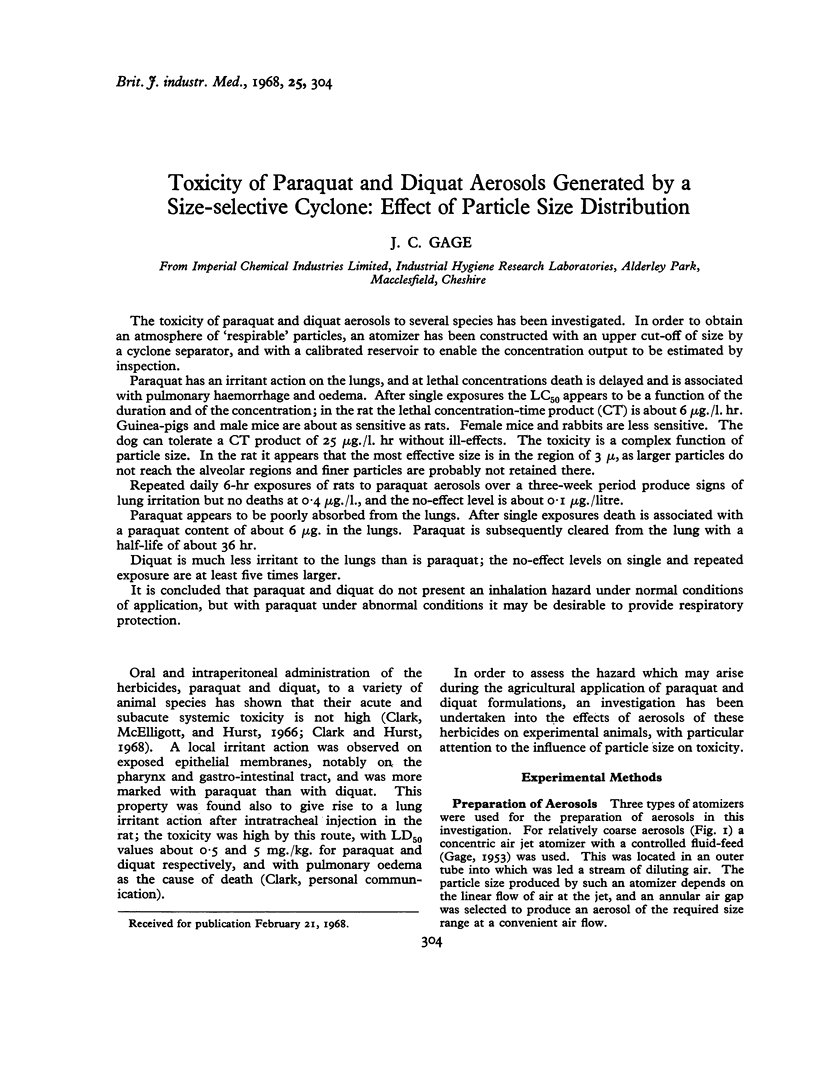

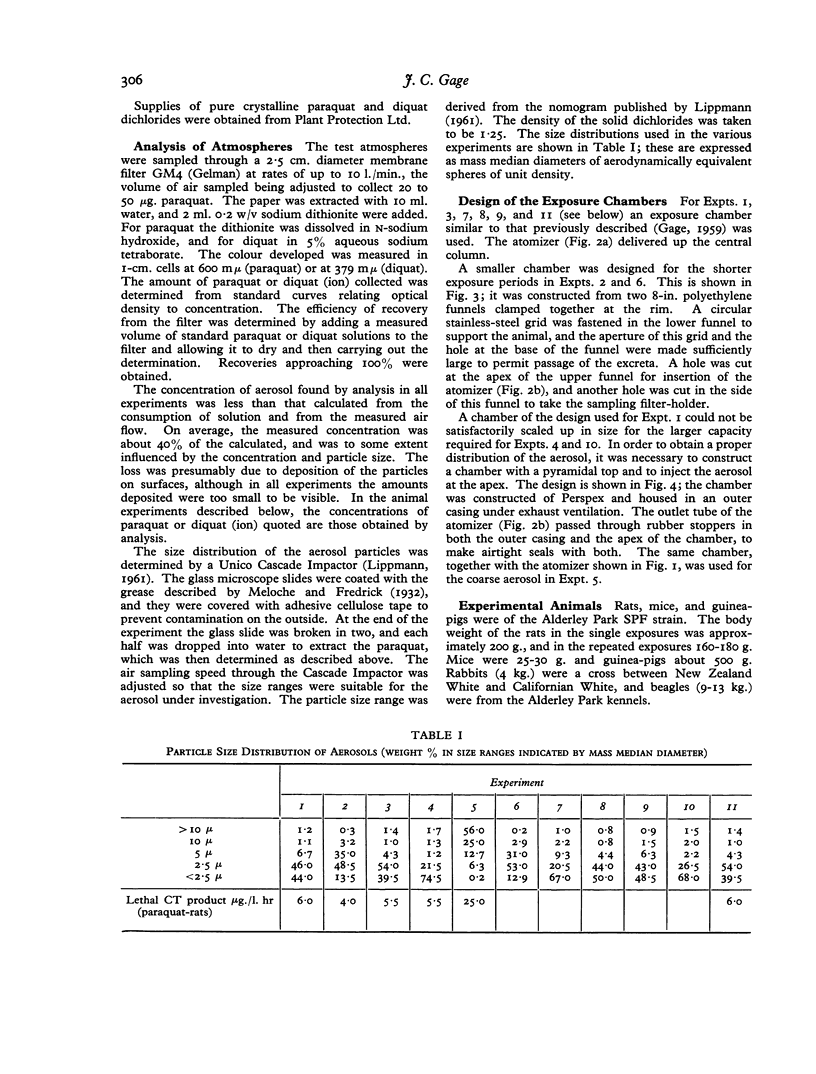
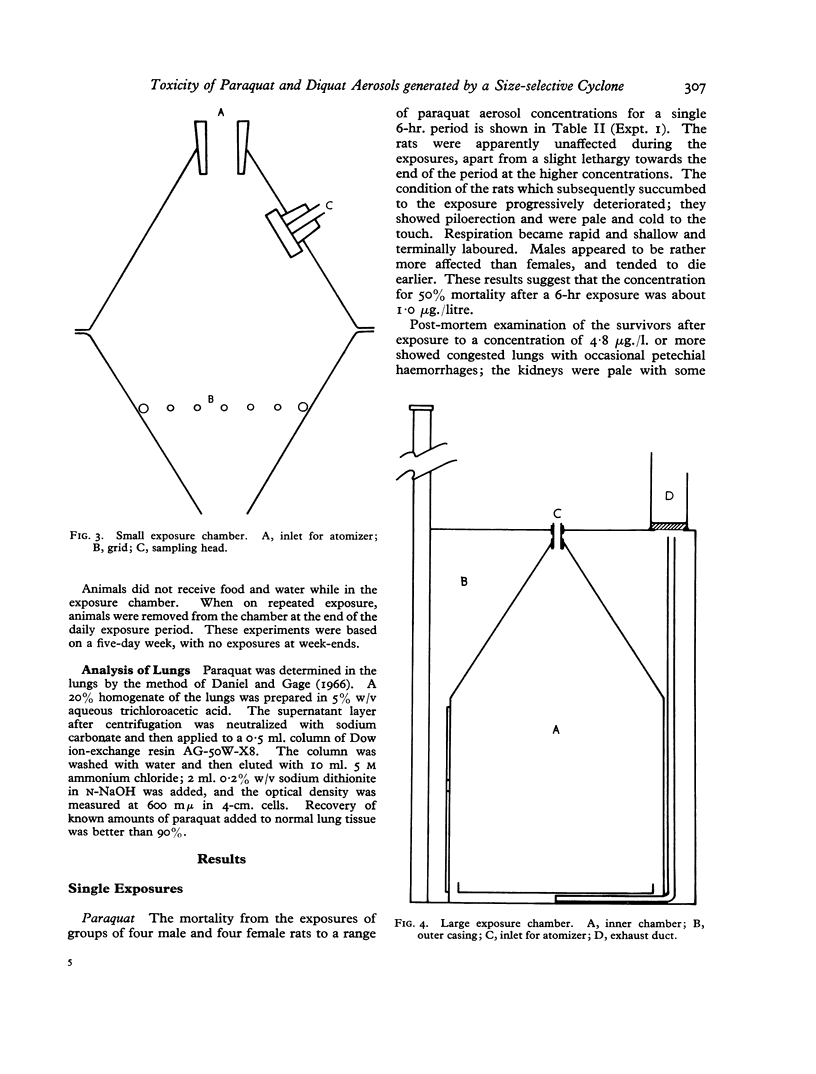

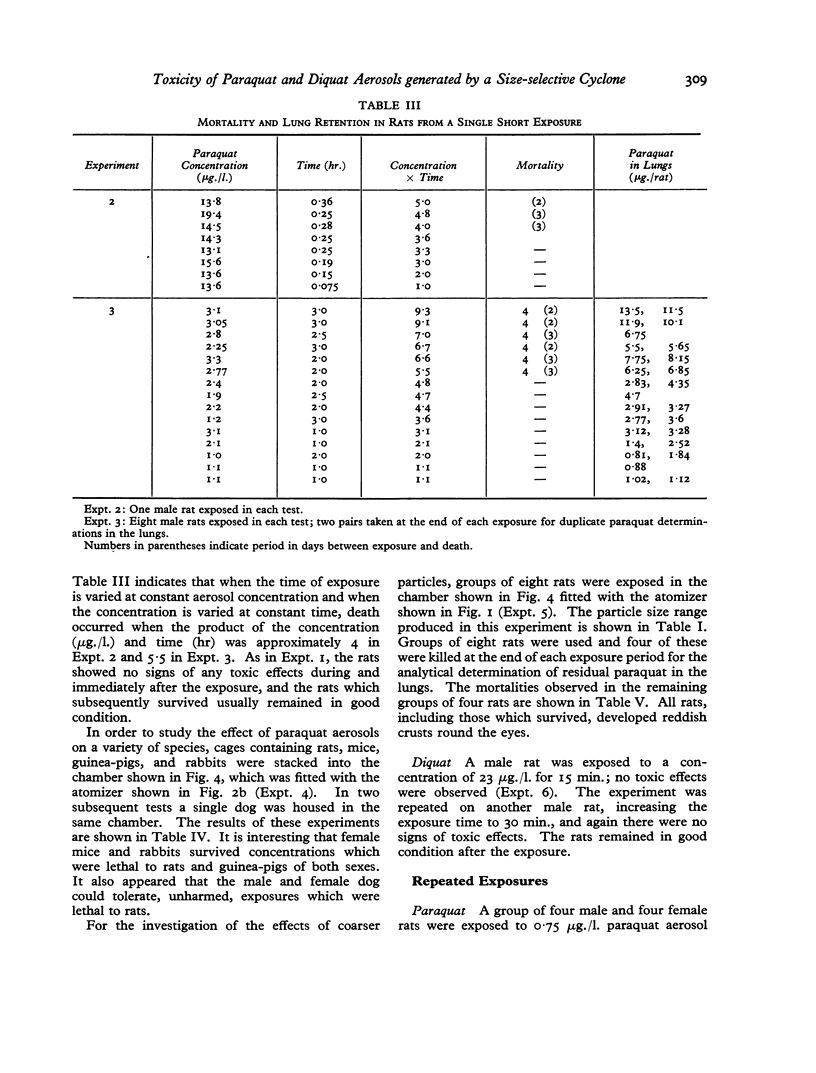

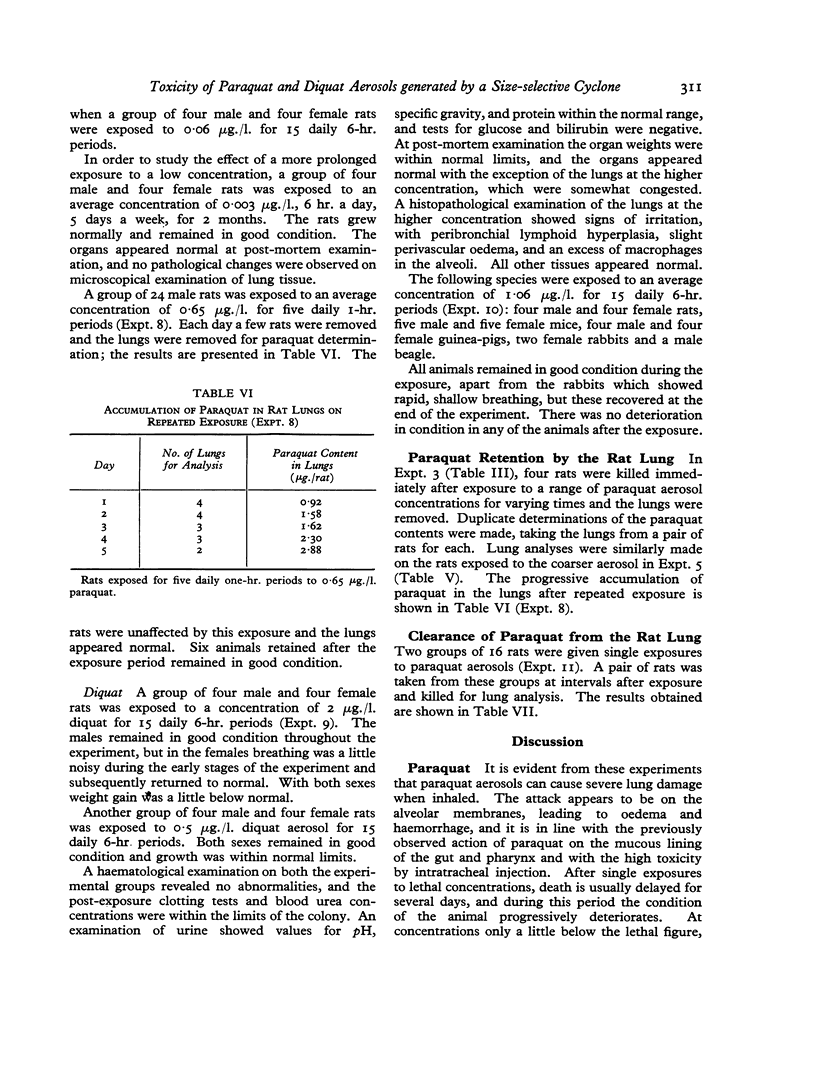
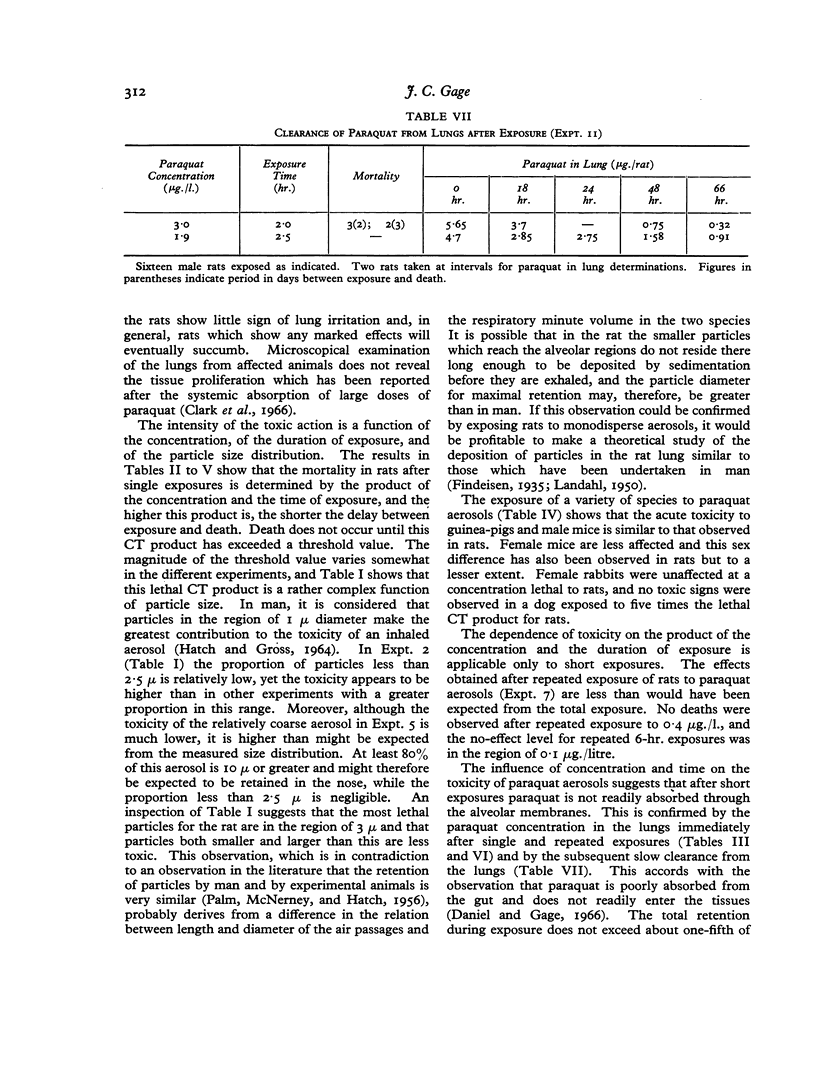

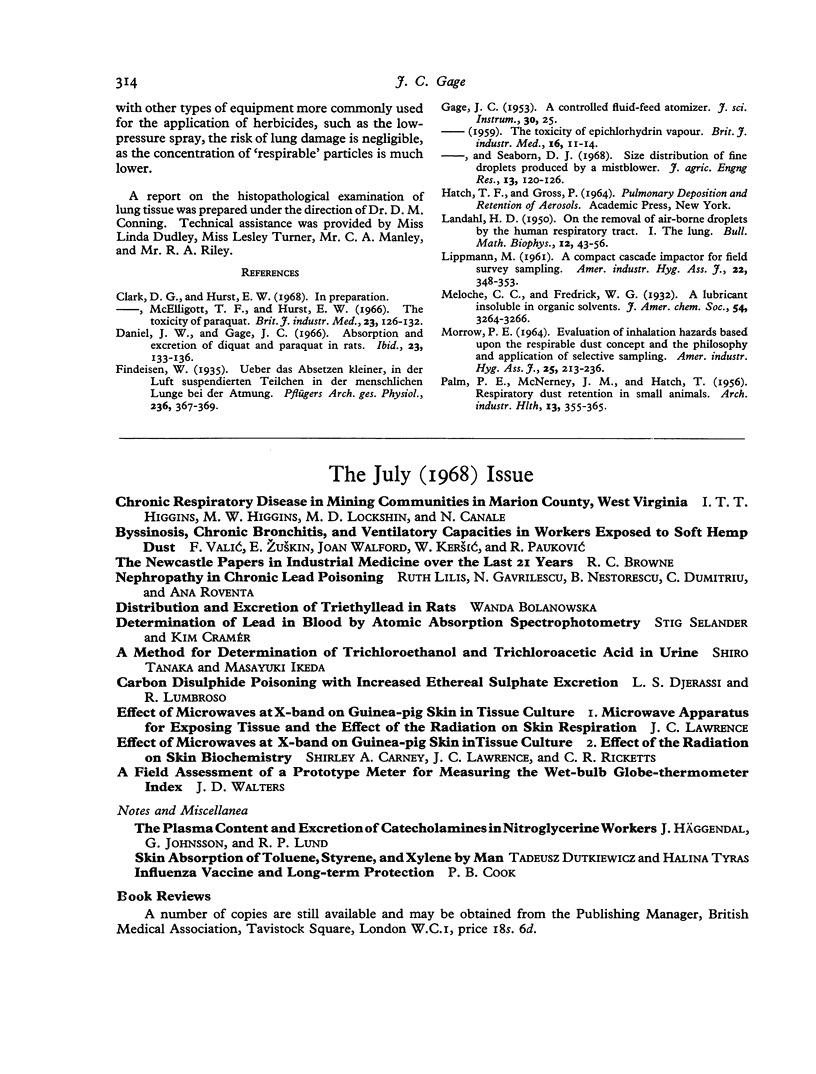
Images in this article
Selected References
These references are in PubMed. This may not be the complete list of references from this article.
- Clark D. G., McElligott T. F., Hurst E. W. The toxicity of paraquat. Br J Ind Med. 1966 Apr;23(2):126–132. doi: 10.1136/oem.23.2.126. [DOI] [PMC free article] [PubMed] [Google Scholar]
- LIPPMANN M. A compact cascade impactor for field survey sampling. Am Ind Hyg Assoc J. 1961 Oct;22:348–353. doi: 10.1080/00028896109343420. [DOI] [PubMed] [Google Scholar]
- MORROW P. E. EVALUATION OF INHALATION HAZARDS BASED UPON THE RESPIRABLE DUST CONCEPT AND THE PHILOSOPHY AND APPLICATION OF SELECTIVE SAMPLING. Am Ind Hyg Assoc J. 1964 May-Jun;25:213–236. doi: 10.1080/00028896409342581. [DOI] [PubMed] [Google Scholar]
- PALM P. E., MCNERNEY J. M., HATCH T. Respiratory dust retention in small animals; a comparison with man. AMA Arch Ind Health. 1956 Apr;13(4):355–365. [PubMed] [Google Scholar]



